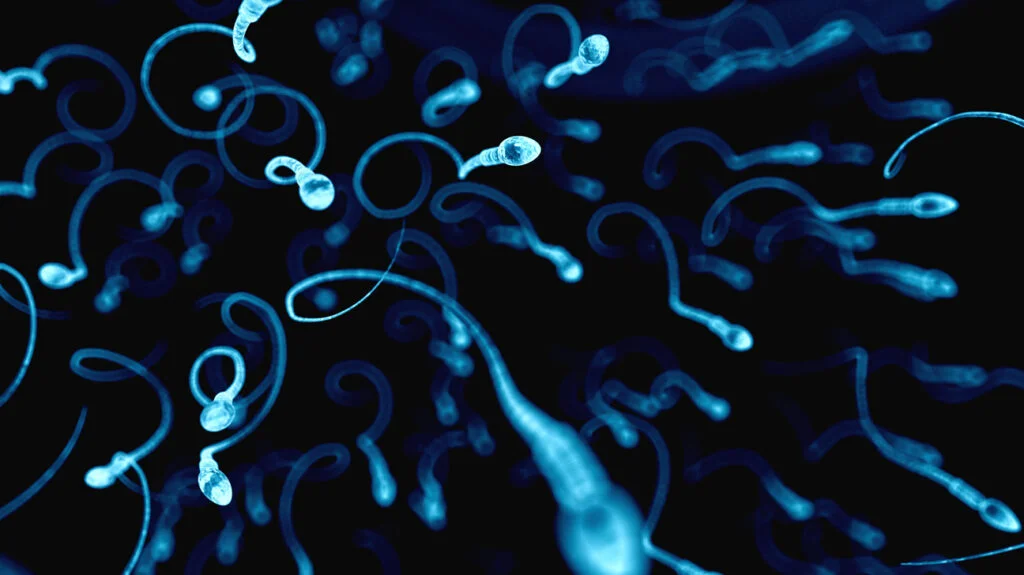Key Takeaways:
- Newton’s laws, particularly the third axiom, have long been fundamental in understanding physical dynamics, but recent research suggests exceptions in the microscopic world.
- Sperm cells’ unique ability to defy Newton’s third law sheds light on the complex interplay between internal forces and hydrodynamics.
- Anomalous elasticity emerges as a crucial concept in understanding how microswimmers like sperm achieve non-reciprocal motion.
- By decoding the mechanisms behind sperm locomotion, researchers aim to develop innovative applications in fields such as medicine and robotics.
- This breakthrough not only enhances our understanding of cellular dynamics but also paves the way for advancements in microrobotics and medical interventions.
Newton’s tripartite axioms, delineated in his seminal opus “Mathematical Principles of Natural Philosophy” circa 1687, have long been the cornerstone of our comprehension regarding the interplay between physical entities and the forces they encounter. These axioms, standard fare in physics pedagogy worldwide, encapsulate fundamental truths about the dynamics of matter. Particularly, Newton’s tertiary decree posits that every exertion met by an object induces an equivalent yet opposing reaction—a tenet of physical reciprocity. Should one apply force upon an object, it, in turn, exerts a commensurate counterforce. However, contemporary research hints at the nascent stages of human development potentially veering from this revered law of reciprocity.
The conundrum arises from the dynamic nature of spermatozoa’s tails as they frenetically navigate their aqueous milieu. Conventional wisdom would dictate that such vigorous motion should dissipate energy, leading these cells to attain equilibrium with their environment and cease their locomotion. Nonetheless, sperm persist in their motility, seemingly unaffected by Newton’s third axiom.
A cadre of scholars, led by Kyoto University’s postdoctoral savant in Applied Mathematics, Clément Moreau, sought to unravel the enigma surrounding sperm and other diminutive locomotors like algae, which appear to flout Newton’s third axiom with impunity.
“Newton’s axioms expound on the motion of matter under the influence of external forces. The third axiom, often dubbed the ‘principle of action and reaction’ or the principle of reciprocity, delineates a scenario where a force applied to an object elicits an inverse, reciprocal force,” elucidated Moreau to Popular Mechanics. “However, within systems comprising active matter, where internal energy inputs can propel entities out of passive equilibrium, reciprocity can be breached… Mechanically speaking, a system exhibiting non-reciprocal interactions may seem to contravene Newton’s third axiom.”
The crux of the matter, posits the team, lies in the notion of “anomalous elasticity,” though a comprehensive understanding of this discovery’s broader ramifications remains elusive. Their findings are chronicled in the annals of PRX Life.
Moreau envisions that by elucidating novel paradigms for propulsion and locomotion, their inquiry into this anomalous facet of nature could pave the way for the development of elastic microrobots, poised to revolutionize domains such as drug delivery, sensory augmentation, and minimally invasive surgery—areas fraught with burgeoning prospects.
The modus operandi of spermatozoa in circumventing Newton’s third axiom In the animal kingdom, sperm cells typically comprise two distinct regions, each serving a unique function, encased within a plasma membrane. While the head harbors vital genetic material requisite for reproduction, it is the minuscule internal architecture of the sperm cells’ flagella—their propulsive appendages—that facilitate their locomotion, propelling them toward their destination: an ovum, where genetic fusion occurs.
This appendage engenders consistent microscopic locomotion by circumventing the “scalloping theorem,” a renowned tenet of microswimming which posits that reciprocal motion—such as the undulation of a swimmer in a fluid—fails to yield net displacement. This theorem derives its nomenclature from the notion that the oscillation of a scallop shell precludes locomotion at a microscale. Microswimmers, like sperm cells, have evolved mechanisms to surmount this impediment, effectively generating non-reciprocal motion.
“Flagella, slender and pliable filaments, have endured through eons of evolutionary progression across myriad microbial species, including human spermatozoa, as potent instruments of non-reciprocal propulsion,” elucidated Moreau. “Nevertheless, the precise mechanism underlying the genesis of non-reciprocal motion from the intricate internal configuration of motile cells remains shrouded in mystery.”
Moreover, Moreau underscores that their objective revolves around decrypting and quantifying this non-reciprocity along the flagella of active microorganisms, with sperm cells serving as the quintessential exemplars of microscopic locomotion. The team postulates that the missing link facilitating the evasion of Newton’s third axiom lies in a nascent concept dubbed “peculiar elasticity,” emblematic of non-reciprocity in mechanical systems. Yet, the conundrum persists: How does one extrapolate this concept to spermatozoa?
“The key to bridging peculiar elasticity with flagellar propulsion lay in delineating the interplay between internal elasticity and hydrodynamic interaction—the forces exerted by the surrounding fluid on the swimmer,” divulged Moreau. “We have amalgamated extant microhydrodynamics theory with an expanded framework of peculiar elasticity, culminating in our ‘anomalous elastohydrodynamics’ model.”
He further expounded that the team’s revelation regarding the stringent containment and non-locality of microswimmers’ peculiar elasticity is pivotal to sustaining propagating waves in flagella, thereby perpetuating microswimming.
For the team, this breakthrough enables the quantification of microswimmers’ non-reciprocity, which has already been applied to numerical simulations and empirical data concerning notable instances such as sperm cells and microalgae. Ultimately, this could engender a deeper comprehension of non-reciprocity across diverse living cells and furnish insights into the design of inanimate entities, such as swimming microrobots.
“Our ability to juxtapose cellular activity across species and individuals through a rudimentary material modulus fosters comprehension of microorganisms’ locomotive mechanisms, with implications spanning fertility and medical spheres,” concluded Moreau. “Furthermore, it equips us with the means to orchestrate interactions between elementary units of microscopic robots, engendering autonomous sequences of motion conducive to efficient and dependable locomotion.”


